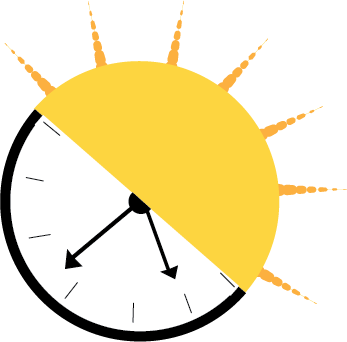It’s high time to bring our clocks into the 21st century

“YOUR FAVOURITE COMPETITORS GO HEAD-TO-HEAD IN THE MOST DRAMATIC COMPETITION OF THE SEASON. DON’T MISS IT, AT 8/7 CENTRAL, ONLY ON ABC.”
This common phrase is familiar to anyone who has watched prime-time television. However, it’s always bothered me. It seems to beg the question, “8 o’clock … where?!” I am all the more conscious of the question this time of year, as Alberta and Saskatchewan once again move an hour apart (despite the borders remaining static), with daylight savings time disappearing in the rearview mirror.
Now, you might be thinking to yourself, “Why not just google the time difference?” But to me, this conundrum seems to indicate a larger issue. In a globalized world, where international communication and coordination are essential, why continue using our antiquated, localized way of telling time? To answer this question, it’s important to first understand how time zones came to be.
Until the early 1880s, telling time was even more localized than it is now. “Town clocks” were the standard to which everyone set their own timepieces. The time-telling business boomed as pioneering entrepreneurs sold their services synchronizing customers’ clocks. However, in 1883, all of that changed.
In an era when trains were taking over North America, having a different time at each stop posed a fairly obvious scheduling problem. Enter Sir Sandford Fleming, a Scottish-Canadian railway engineer. After missing a train in 1876 due to confusion with the posted schedule, Fleming began discussing his idea for “Cosmic Time”: a single, global time zone using the 24-hour clock, based on the time in Greenwich, England.
By the 1920s, most countries had adopted the system now called Greenwich Mean Time (GMT), which split the globe into the time zones we observe today. However, even now, our “universal” system for telling time is not entirely agreed upon.
Take, for example, half-hour time zones. Places such as Iran, Australia, and even Newfoundland have time variations of only a half-hour, splitting each time zone even further. Learning all of this got me thinking: if one pasty Canadian can revolutionize the way society tells time to keep up with the currents of innovation, why can’t another?
Since the days of Fleming’s “Cosmic Time” proposal, a lot has changed. We no longer travel by horse-drawn buggies and trains, but instead in automobiles and airplanes. I can watch a live event happening across the world with only a few milliseconds of delay, or share my underdeveloped thoughts on global happenings in a 280-character word-blast that could be seen by millions. Everything I own was made on continents I’ve never visited. The world is radically different from the days of Sir Sandford Fleming.
Despite all this innovation and progress, we continue to rely on a chronology system that was made to convenience a society that no longer exists. It’s time that our clocks reflected the new, globally connected world we live in. It may be comfortable to have high-noon at the zenith of the Sun’s journey across our sky regardless of where we are in the world, but I would argue that the days of taking off and landing at “the same time of day” ought to be behind us.
The solution is simple. We should adopt Fleming’s original plan for Cosmic Time, using the Prime Meridian as the basis for a single, universal time zone. Seeing as it takes 24 hours for a day to pass, we should also convert to 24-hour clocks to reflect this.
I understand that adjusting to this will take time. Waking up at 18:00 would be rather startling for most people, even if it was just as the sun was rising. What should be remembered when considering this topic is that the way we communicate time is nothing more than a construct of our brains that bears no significance on the natural world. All it takes to adjust is practice. We have proven in the past that we are capable of significant change, even if it is a gradual process. For example, it wasn’t until 1971 that Canada officially started using the metric system rather than imperial. If we’re all able to switch from Farenheit to Celsius, why can’t we make this change as well?
This way of telling time would substantially simplify the way we communicate with one another, providing a newfound clarity that would be highly productive. While it isn’t hard to convert the time from one zone to another, this simplification is nonetheless worthwhile. Something as simple as time should not be nearly as complex as it currently is. Sooner or later, we will have to reconsider the way that we approach time. I say that time is now.






